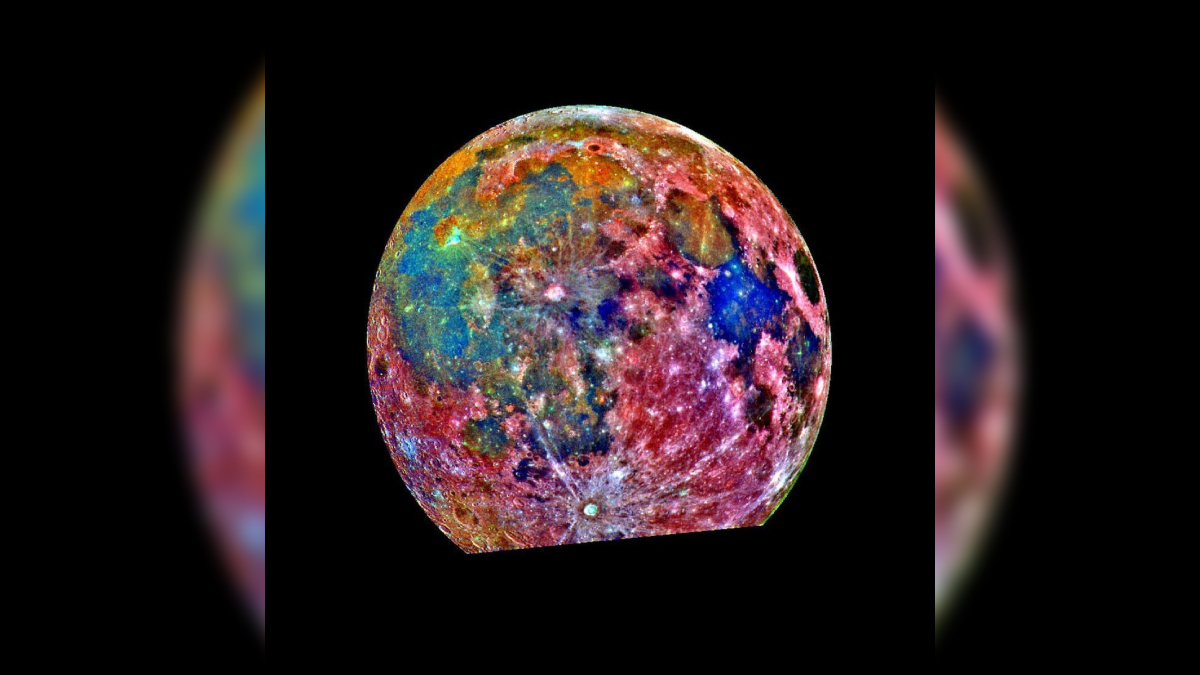NASA has released an awe-inspiring composite image of the Moon, showing it in vibrant shades of red, blue, and orange, rather than the familiar gray. The image was captured by the Galileo spacecraft’s solid-state imaging system during its flyby of the Earth-Moon system on December 8, 1992.
The image, which NASA shared on social media, offers a unique perspective of the lunar surface. “That’s not a giant bath bomb, it’s our Moon!” NASA joked in its Instagram post, showcasing the Moon in colors that help scientists better understand its surface composition.
The different hues represent specific geological features. Red areas correspond to the lunar highlands, while the blue and orange tones indicate regions of ancient volcanic lava flow, known as a mare, or lunar sea. “Bluer mare areas contain more titanium than the orange regions,” NASA explained, highlighting Mare Tranquillitatis, a deep blue patch to the right, which is rich in titanium. Nearby, the slightly smaller Mare Serenitatis is also visible in a lighter blue hue.
According to NASA, the composite was created using 15 images captured through three color filters while the Galileo spacecraft was 262,000 miles from the Moon and 43,000 miles from Earth. Although Galileo’s primary mission was to study Jupiter, this captivating image offers a deeper glimpse into the Moon’s surface, revealing details that are otherwise invisible to the human eye.
NASA also noted the scientific significance behind the coloring. “The unusual colors in this photograph help scientists study what the Moon’s soil is made of,” the agency explained, adding that the purple spots near the center indicate areas affected by explosive volcanic eruptions.
While the colors may not be natural, they allow researchers to gain valuable insights into the Moon’s geological history. The Galileo mission, which ended in 2003 after orbiting Jupiter for nearly eight years, continues to provide new perspectives on celestial bodies long after its journey ended.
As NASA quipped, “While this image won’t give you a luxurious bubble bath, meditating on all its colors can be just as relaxing.”






